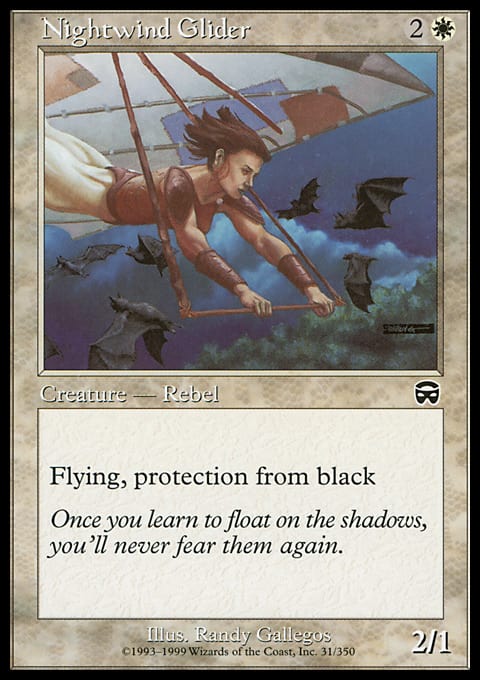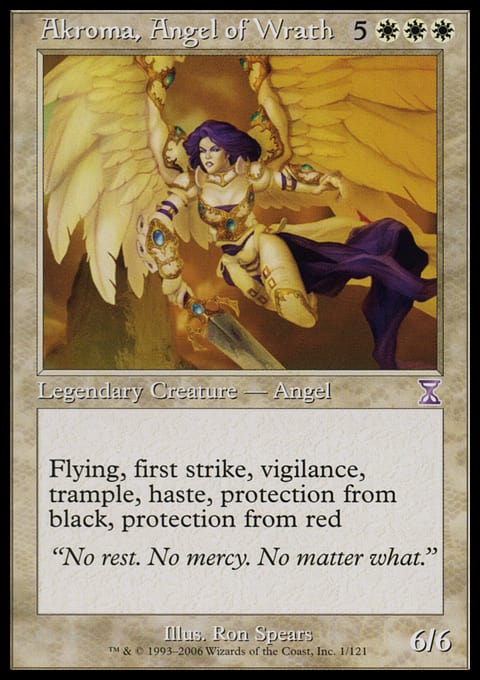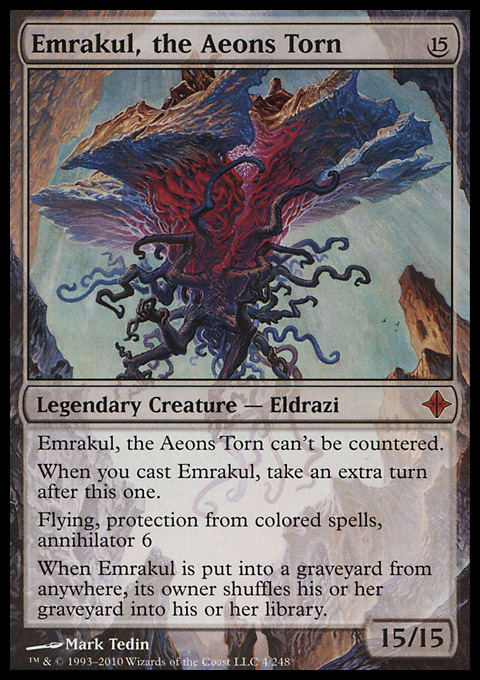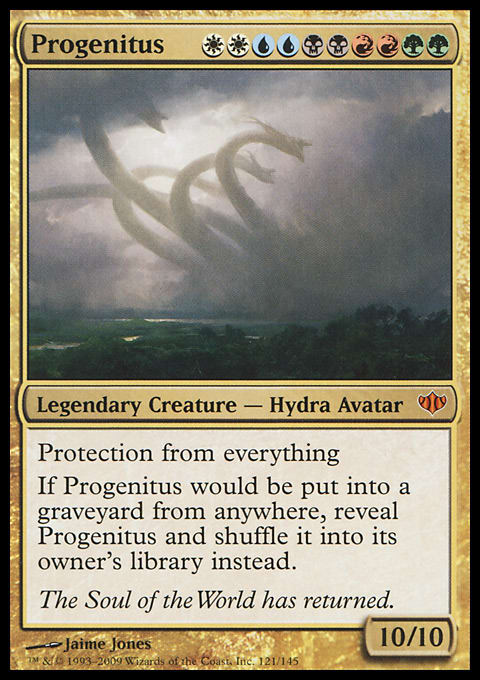Have you ever been in the middle of a game of Magic, and felt completely powerless against one of your opponent's creatures? This occurs in various games for many different reasons, but one mechanic that seems to create this feeling more often than others is Protection. When a card has Protection from a subset of cards, and your deck is filled with said protected-from cards, you suddenly find yourself in a minigame whereby you eliminate their Protected threat or lose the game.
Why is Protection so powerful? Why does Mark Rosewater state that the mechanic is "complex," yet still deciduous in nature? What are some of the nuanced rules with Protection? This week, I'm doing a deep dive into one of Magic's first mechanics and how it has evolved throughout the game's history.
Protection: What Is it?
According to the Magic Fandom Wiki page, the rules defining Protection have evolved over the years. In its current form, Protection from a quality means that the card (usually a creature) can't be blocked, targeted, dealt damage, enchanted, or equipped by anything of the given quality. The ability is primary in White, but has shown up on all colors over the years.
Players are sometimes confused by the power and limitations of Protection, which is why Mark Rosewater deems the mechanic relatively high in complexity. In the example above, Nightwind Glider has Protection from Black. What exactly does this protect Nightwind Glider from?
The easiest way to remember this is to think of the acronym DEBT:
Damaged - Nightwind Glider can't be damaged by Black cards--all such damage is prevented.
Enchanted, equipped, or fortified - Nightwind Glider can't be targeted by Black auras, equipment, or fortifications
Blocked - Nightwind Glider can't be blocked by Black creatures
Targeted - Nightwind Glider can't be targeted by Black spells or abilities
That's it. That's what Protection grants you. Note, for example, that a creature with Protection from Black can still be killed by Black cards if the cards don't use targeting. Damnation, for instance, would kill Nightwind Rider. Infest would also do it. Dry Spell, which does one damage to each creature and player, would not kill the Rider because the creature can't be damaged by Black cards.
You can see where the nuances start to get tricky, but if you follow the basic rules above, you should get the mechanic right. Because of this complexity, Protection was excluded from Sixth Edition, Seventh Edition, and Eight Edition. Then with Magic Origins, the mechanic was demoted from evergreen to deciduous. While Wizards of the Coast continues to print cards with Protection, they do so sparingly and with caution, knowing it can get a little complex. In the official rulebook, section 702.16, the details outlining Protection run from part a through p. If you need a part p, you know things are getting complicated!
Different Kinds of Protection
The first and most common instance of protection comes in the form of Protection from a specific color. Back in Alpha, Richard Garfield created a cycle of five auras, all White, that granted a creature protection from a given color.

Funnily enough, when it was originally printed, White Ward actually didn't work correctly! Think about it--a creature with Protection from White can't be enchanted by a White card. Thus, casting White Ward on a creature would grant it Protection from White, and immediately remove White Ward! As a result, Wizards updated the card's text in Fourth Edition to include the clause, "The protection granted by White Ward does not destroy White Ward."
Also in Alpha were White Knight, which had protection from Black, and Black Knight, which had Protection from White.
Since then, creatures with protection from a specific color (or colors) have proven to be quite powerful throughout Magic's history. Gaining protection from Black or Red was especially powerful because the most common removal spells would often be those colors (though having Protection from White to dodge Swords to Plowshares also had relevance).
One of the reasons I loved Akroma, Angel of Wrath so much when it first came out was its long list of abilities, including Protection from Black and Protection from Red, making this card particularly difficult to deal with.
Some cards had protection from more than one color, such as Akroma, Angel of Wrath and Akroma, Angel of Fury. Other creatures have protection from all colors, such as Iridescent Angel, making it quite difficult to deal with! Talk about creatures that make you feel powerless!
A few years after Magic's release, Wizards of the Coast started to get more creative with this mechanic. They looked beyond colors and identified numerous other things from which a card could gain protection. For instance, Yavimaya Scion may have been the first creature printed with Protection from Artifacts. This would later be used on many cards, especially in Mirrodin block, such as Needlebug, Infested Roothold, and Tel-Jilad Chosen.
In a bizarre attempt at flavor, some creatures were granted protection from a particular creature type. The first instance of this was printed in Invasion, where Shoreline Raider was granted protection from Kavu, a popular creature type from the set. Also from Invasion was Tsabo Tavoc, which had Protection from Legends (nowadays this would say "legendary creatures").
Foothill Guide is another example--a creature from Onslaught with Protection from Goblins. Riptide Biologist had Protection from Beasts. Fallen Cleric had Protection from Clerics. Dragonstalker had Protection from Dragons. Harbinger of Spring has Protection from non-Spirit creatures. Elite Inquisitor has Protection from Vampires, Werewolves, and Zombies. The list goes on and on.
Then there is the really powerful, basically unblockable creatures with Protection from Creatures! A few cards were printed with this ability, but one of my favorites is Commander Eesha. Sure, the Bird Soldier can be killed with a common removal spell. Good luck killing it in combat, though! Because Commander Eesha has protection from creatures, it is basically unblockable and can block most things without dying because it can't receive damage from other creatures.
Unquestioned Authority is an Aura from Judgment that grants a creature Protection from Creatures; to this day I think the card is underappreciated in Commander. It even cantrips to replace itself!
There's so much more to talk about but limited space to do so adequately. Horizon Drake, from Worldwake, has Protection from Lands! Ronom Hulk has Protection from Snow. Azorius First-Wing has Protection from Enchantments. Petrified Wood-Kin has Protection from Instants. Lavabrink Venturer has Protection from even or odd mana values. Haktos the Unscarred has protection from 2, 3, or 4 mana values (chosen randomly). The list of protection variations goes on and on.
Wizards also started printing more and more cards that grant protection, either temporarily or permanently. Iconic iterations of this are the cycle of Swords, such as Sword of Fire and Ice (Protection from Red and Blue) and Sword of Light and Shadow (Protection from Black and White).
The Ultimate Protection: EVERYTHING
With so many iterations of Protection, which do you think is the most powerful and oppressive? Emrakul, the Aeons Torn seems awfully difficult to deal with, having Protection from spells that are one or more color, but even this 15/15 flying creature isn't the most difficult to deal with.
It can still die to colorless removal or to removal abilities, such as Seal of Doom. I suppose Emrakul can also be blocked, albeit not for very many turns.
Instead, the most powerful of the Protection abilities is literally called, "Protection from Everything." Yes, this exists. Yes, it is as overpowered as you'd expect. There are currently seven Magic cards that have or grant Protection from Everything, and they're all rare or mythic rare. Wizards of the Coast knows such an ability is unstoppable, and they don't use it lightly.
Progenitus was the first card to have Protection from Everything, and Wizards of the Coast gave it a prohibitively difficult casting cost to provide at least some balance with the ability.
In order to kill Progenitus, you need a Wrath effect of sorts. You can't kill it in combat, you can't target it with spot removal, and you can't deal damage to it with any card. Everything literally means everything, as long as it follows that DEBT acronym I mentioned earlier.
The only other creature with Protection from Everything is a fully leveled up Hexdrinker. Vexilus Praetor grants your Commander(s) Protection from Everything. The only other instances of "Protection from Everything" are cards that grant you Protection from Everything, and only temporarily. The One Ring is probably the most [in]famous instance of this.
Upon The One Ring's hitting the battlefield, you gain Protection from Everything until your next turn. The Statis Coffin, Perch Protection, and Teferi's Protection also grant you Protection from Everything until your next turn. For now, these are the only cards that provide such a powerful effect.
Wrapping It Up
Protection can be an immensely powerful effect, but it also comes with a bit of complexity. For this reason. Mark Rosewater deems the mechanic deciduous, using it from time to time but sparingly. For instance, it looks like Magic's newest set, Tarkir: Dragonstorm, contains exactly one card with Protection, and it's a mythic rare.
Ureni, the Song Unending costs eight mana and spans three colors. It's also a mythic rare. As a result, you're not likely to see this creature hit the battlefield very often in Limited or Standard. Wizards tailored this card for Commander, where there are many more tools available to deal with creatures with protection.
In fact, most new cards with Protection are printed in supplemental Commander sets or advanced reprint sets such as Modern Horizons 3. That's probably the best place for these abilities. Having too many cards with Protection running around in Limited and Standard can lead to some highly unfun gameplay.
Just imagine what things were like "back in the day." You're playing a deck with heavy Red in Limited, and your opponent casts Absolute Law out of the sideboard, granting all creatures Protection from Red. Suddenly, most of your deck doesn't function properly. How about a Limited environment where Pilgrim of Virtue and Pilgrim of Justice, two commons from Odyssey, are often played? It suddenly makes playing Red or Black decks much more difficult.
No, it's definitely better to keep Protection in check by using it sparingly, as Wizards of the Coast has done in recent years. Not only does this avoid the unnecessary complexity that Protection brings, but also reduces the number of non-games that could result from such a one-sided ability. Hexproof and Ward do a great job mimicking Protection in a way that can still be handled, and we'll likely see more implementations of these effects rather than Protection for the foreseeable future.

































